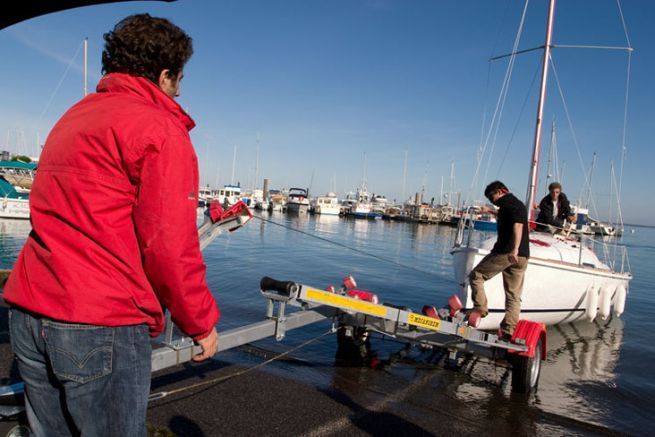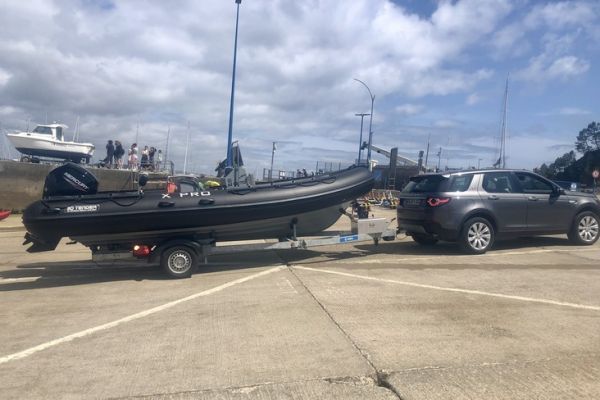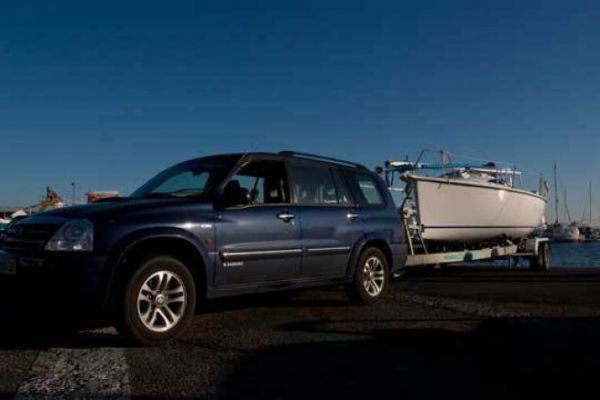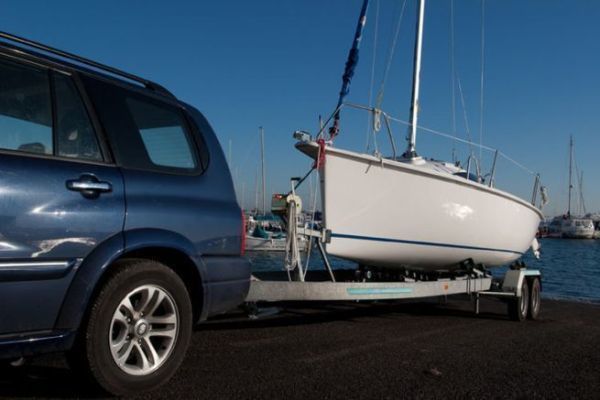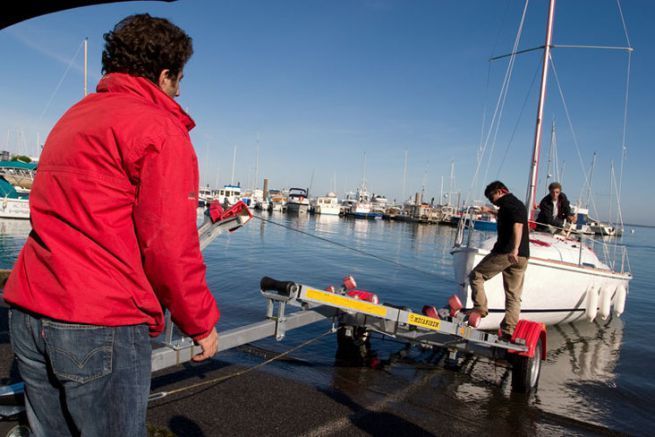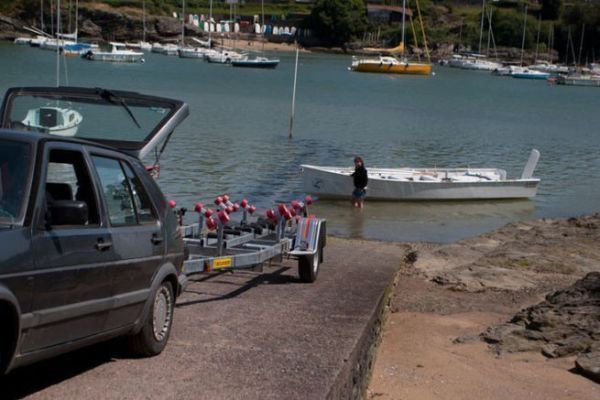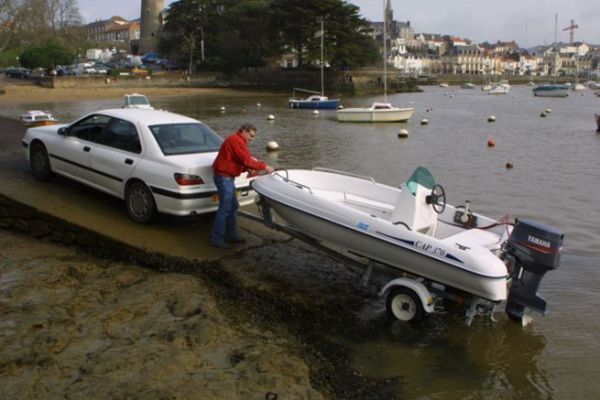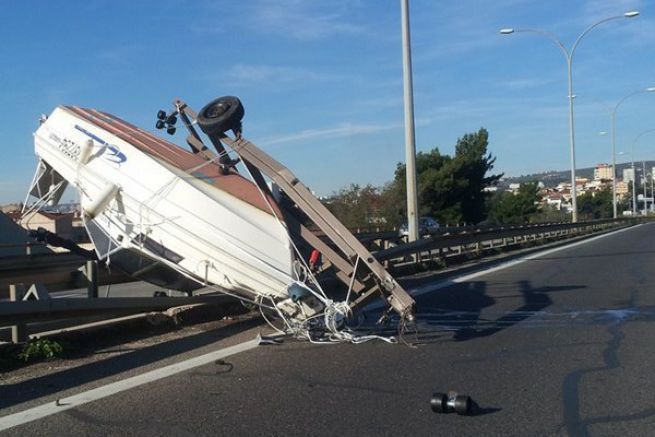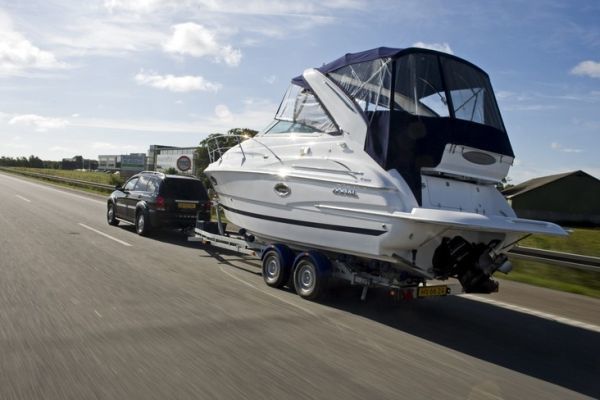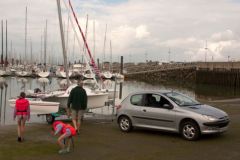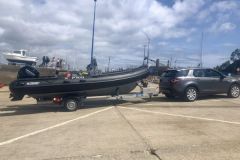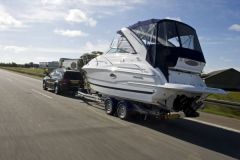Which car do you recommend for towing?
It is not necessary to have a large 4 X 4 to tow a trailer under 1,600 kg. It is sufficient to have a car with a capacity that allows easy towing and whose weight is greater than the total weight towed to avoid the E permit.
The car must be powerful enough. It's nice to be able to reverse with the trailer attached without having to spin and smoke the car's clutch. The same goes for not slowing down too much on hills.
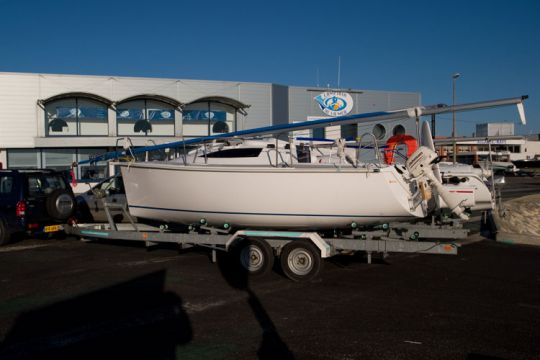
Up to what size is a sailboat considered transportable?
We are not talking about size, but about weight. Thus, it is considered "easily transportable" if the total weight of the sailboat plus its single-axle trailer does not exceed 1,600 kg. Without forgetting, of course, to respect some basic rules.
Above this weight (more than 1600 kg), you will have to use a double-axle trailer, which will be more difficult to manoeuvre, particularly because of its turning circle. With this type of coupling, the term "transportable" is reduced to its simplest expression and will be limited to motorway sections with long straight lines.
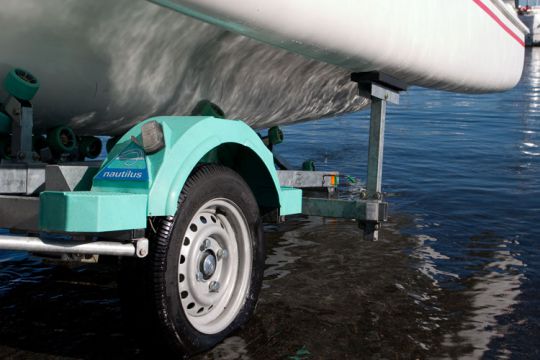
How to choose a trailer?
It is important to take a trailer adapted to the hull of the yacht. Similarly, it must be perfectly adapted to the type of ballast if an appendage is protruding from the hull: salmon, sabre keel, bulbous ballast, fixed or pivoting keel, etc. As for equipment, choose supports (stanchions) fitted with runners rather than rollers. Wider, the skids avoid hull deformations if you often travel long distances. A boat trailer must be braked, and if possible with disc brakes.
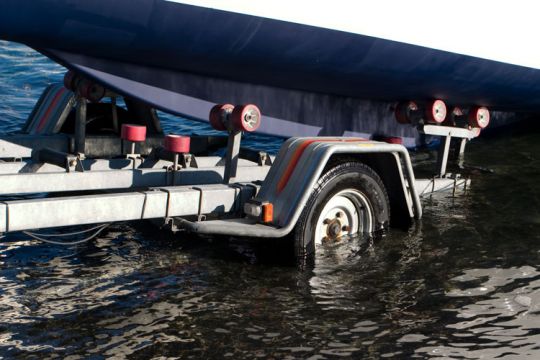
How to adjust your trailer?
Have a professional adjust the position of the axle(s) in relation to the boat's center of gravity. It is usually at the level of the ballast. If possible, have the hull rest on structural elements (at the level of the floors or counter-moulds) which sound less hollow when struck with the hand. This will avoid distorting the hull, especially if you use roller supports.
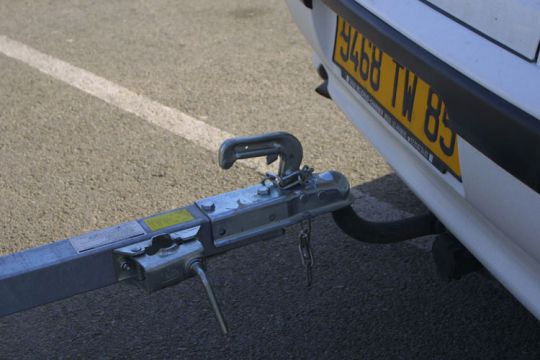
What to think about before you hit the road?
You can travel with the jockey wheel locked in the up position. But when you arrive, remember to remove it and leave it in the boot of your car, as it is easily stolen. The same applies to the spare wheel (if it is easily accessible on the trailer) and the number plate with the main lights.
Get a screw jack that can lift up to 1,500 kg, because nowadays jacks on new cars have often disappeared or those offered do not fit on a trailer chassis. The ideal is to have a small hydraulic cylinder jack that can lift up to 2 tons (small and cheap).
Remember to leave some slack for the license plate wire between the car and the trailer. It will not be too taut in the bends and jolts. Otherwise you risk pulling out the plug or worse, tearing out the wires. Also consider buying a 13-pin adapter if your vehicle is old (plug standards have changed).

And how to ensure a good launch?
Launching trailers, whether breakable or not, may only be operational on slipways with a slope equal to or greater than 12%.
Never put the axle or wheel hubs of a trailer in sea water when backing up on the slipway. Otherwise the axle will seize up in the long run and lock up suddenly. Imagine if this happens at 110 km/h on the motorway! It is a serious accident, even fatal, for you and those who follow you!
Do not rely on the optional rinse kit offered by some manufacturers. It is just a sales argument and has never proven its effectiveness. If you absolutely must immerse your trailer and boat, you will need a specific trailer that can be immersed in sea water. And each time you use it, you will have to drive about ten kilometres to dry out the axle...
If by accident the axle has been in sea water for even a few minutes, in addition to rinsing it thoroughly with fresh water, it should be dismantled, cleaned and lubricated during the winter period.
Yachts equipped with a fixed keel must be rigged, whatever their light weight. Sailing boats equipped with a retractable keel may, if their light weight remains reasonable (less than 1,000 kg), be launched either with a breakaway trailer or with a trailer that can be immersed in fresh or salt water.
For sailboats with a brittle keel and trailer, rather than bringing the trailer parallel to the slipway in reverse, you might as well use one side of the slipway by putting the trailer perpendicular to the slipway. This way, when the boat is launched, it will find a lot of water and its keel will not hit the bottom. If you don't want to see your car going into the water at the same time as the boat (a wrong manoeuvre can happen quickly), uncouple your towing vehicle and put the handbrake on your trailer. You will avoid very unpleasant surprises.
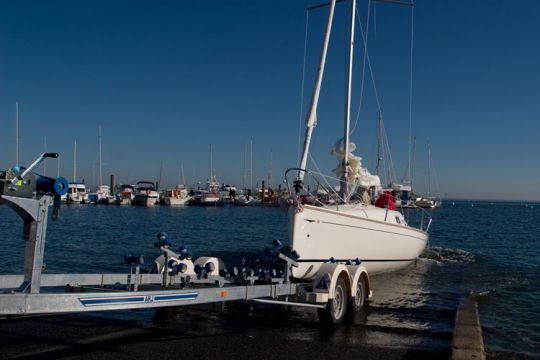
How to correctly strap your boat to the trailer?
The boat must be stopped on its trailer so that the two become one. This is especially important in the event of untimely braking. It is not necessary to multiply the mooring straps indefinitely. As a general rule, if the boat is perfectly centred on its trailer, 3 straps are enough to hold it perfectly. One strap at the front of the boat passed through the winch chainplate and which will be passed under the central drawbar in order to hold the hull on its trailer and to prevent it from jumping off at each speed bump or imperfection in the road. The other two will be placed on each side of the stern to prevent the boat from moving backwards. Pass the strap over a solid mooring cleat and pass it obliquely over a trailer hitch. As we see all too often, strapping the boat down vertically and completely at the stern with a single strap is not effective! Another tip is to use a padded dinghy strap protector to protect the hull and gunwale by sliding the strap into it!
To prevent the straps from flapping in the wind during transport and damaging the paint or stripping the gelcoat from the hull, remember to twist them when strapping them in. Contrary to popular belief, a strap that is not twisted will flap in the wind.
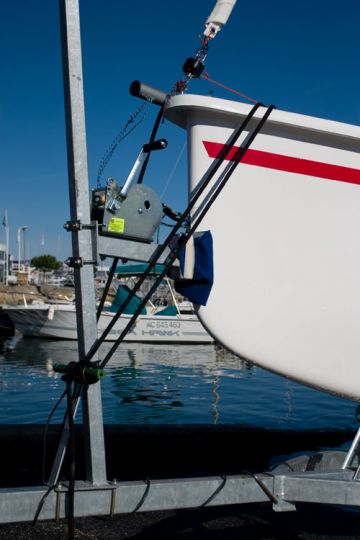
What about the mast?
For long trips, it is advisable to dismantle all the mast stays (shrouds), which, even when attached with bungee cords, will always find an opportunity to come loose and scratch the deck. The same applies to the turnbuckles, which unscrew due to vibrations and which you risk abandoning on the road.
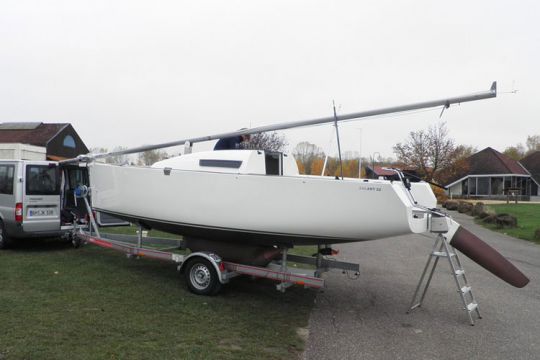
What about driving on the road?
Before you leave, measure the maximum height of your boat on its trailer. Place this information near your steering wheel, it will encourage you to be extra cautious when you encounter a road sign limiting the height of passage. Once on the road, always keep in mind your boat's windage.
Unless you encounter a hairpin bend where you will have to move the towing vehicle further outwards, it is assumed that where the front axle of your car passes, the wheels of the single-axle trailer will pass at the same point for a maximum length of 7 metres (this is particularly true on roundabouts).
And finally, a little practical tip for our readers?
If your trailer is to be parked in a parking lot for a few days, never apply the hand brake. You risk blocking and seizing the brake shoes. Sometimes you can get the brake shoes to release by driving back and forth. This is doable if the trailer is empty, but not if the boat is on it. If not, you will have to remove the wheel and tap the brake blocks with a mallet. To avoid this blocking, do not apply the handbrake and chock the trailer with a set of plastic or wooden chocks that you will place in front of or behind the wheels depending on the inclination of the parking.
As long as all these recommendations are respected, sailing around France and the rest of the world with your sailboat becomes child's play and a smooth journey. Have a nice trip!
